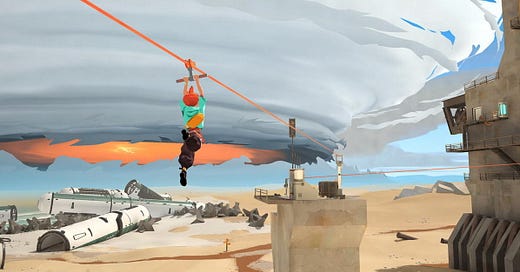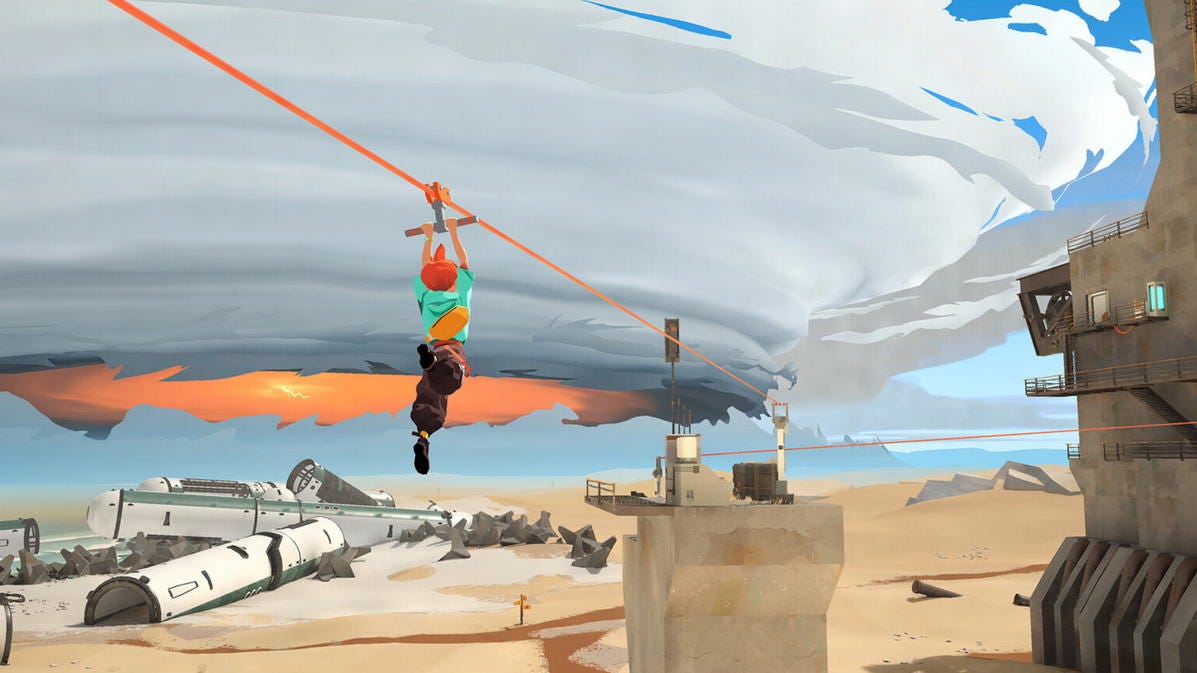“Your community is your home. Live in harmony in an environment hostile to all civilizations.”
— from the Caravan Sandwitch website
Being In the Game World
As a therapist, I explore my clients perspectives. This is part empathy and part curiosity. When one client spoke about diverting themself from business and family using a video game, I thought I should try it myself.
Compared to the teenagers I know, my counseling clients spend zero time playing games. You might think this is obvious because video games are designed for teenagers, but many games are targeted at young adults.
Teens spend an inordinate amount of time playing online games. Online games provide a kind of socializing that doesn’t suit adults. These games support real-time collaboration, action, violence, and teen-oriented sexuality drawn from Japanese Anime and superhero stereotypes. Online gaming compensates for teens’ inherent immobility as they rely on their parents for moving around.
Many games target adult interests. Adults control their own mobility, so these games offer less social interaction and more action and puzzle themes. In this regard, board games attract adults because adults can get together more easily. Single player video games involving strings of short themes are well suited to players who have many small windows of time.
Adult games also focus more on social issues and plot development. There is also a kind of middle range that incorporates both adult and adolescent themes, combining sexuality, action (usually violent), and social attitudes. The famous Grand Theft Auto video game, first released in 1997, was shocking in this regard. The franchise continues to produce new versions targeted at the same audience. Adults have since gotten used to the violence. Games of this kind spawned the video game rating system.
Rating and Ranking
A glimpse of how video games are rated can be seen from the ratings assigned to them:
Everyone
Everyone 10+
Teen
Mature
Adults Only
These categories refer to what’s morally and not intellectually required. In addition, there are the thematic categories (from Wikipedia) of:
Action
Action-adventure
Adventure
Puzzle
Role playing
Simulation
Strategy
Massive Multiplayer Online
Sandbox/Open World
Each of these has a dozen subgenres.
Board games are described differently, leaning more toward being ranked by their playing quality and less rated for their appropriateness. A typical ranking of board games (from bombardgames.com) uses these 10 criteria:
Time spent playing
Number of alternative strategies
Thought per turn
Experience needed to win
Expense
Amount to learn
Difficulty learning
Sessions until competent
Number of supporting players
Range of the target audience
In literature, science, and art novelty is recognized and considered primary. You might think that in an industry focused on play, there would be more focus on what’s creative. Novelty is not a game criterion. Games are expected to break down into the existing categories regardless of their novelty.
Involvement Versus Immersion
When I play games it’s not to win but to explore. I’ve spent far more time designing than playing games. My interest in game designs is more to avoid what’s been done before.
In fine arts one can be a creator or a consumer, but these are quite different with a lot of separation between them. Making good art is hard and rarely appreciated, so most people involve themselves in crafts.
Most people read, and while many people write, few people write professionally. I read a lot for information but rarely for entertainment. I write a lot. Games fall between art and literature, between fictional whimsey and nonfictional simulation.
My client’s mention of video games coincided with a video game review in the New York Times that leaned toward adult games. It mentioned the expansive and unusual games Jusant and Caravan Sandwitch, puzzle games that reviewers lauded for being creative and playable.
Lacking a gaming computer, I lowered my expectations, but my son has a Nintendo Switch which offers good performance for any title that runs on it. I bought Caravan Sandwitch for CA$30. It’s a six chapter, 6 to 10 hour game.
Caravan Sandwitch, which I’ll abbreviate as “CS,” is subtyped as a “cozy game,” described as a video game genre characterized by its focus on relaxation, comfort, and a low-pressure, stress-free experience. I spent 6 hours on the first chapter alone. I didn’t find it particularly “low stress,” but then I’m not 14, and I’m unaccustomed to video game play, which is unquestionably a skill.
I told myself I would stop playing the game after finishing chapter one, then chapter two, and finally chapter three. By that time I’d seen how the game was designed, got the basic plot, could navigate most of the mechanics, and roughly understood the rewards that lay ahead.
At that point the novelty wore off. There was diminishing attraction to offset the time, labor, and minutiae required for puzzles ahead. I started watching YouTube play-through videos. This changes the video game experience to something more like watching a movie. It relieved me from the laborious sidetracking required for learning relevant thematic details.
As Dylan McCarthy says in a review of CS at Impulsegamer.com:
“Until the point where I found myself tired of visiting the same points of interest, the air of feeling like an adventurous child who can travel and climb wherever they want without consequence felt incredibly refreshing in a way I didn’t know I needed.”
Tolerance, Relevance, and Education
If you’re the kind of person who would rather design your own life, then schedule a free call:
Listen to this episode with a 7-day free trial
Subscribe to Stream of Subconsciousness to listen to this post and get 7 days of free access to the full post archives.














